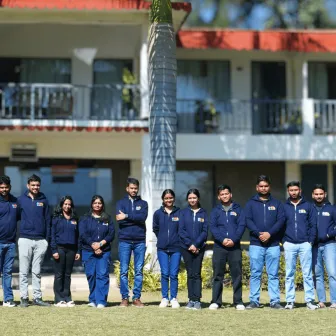Do you think contributing to the open source community can be difficult? I don’t think so. Do you have to be employed by a good brand, obtain any specific degree, or even give up your regular job to participate in the community? Not really.
But you need to understand the open source projects’ capabilities and roadmap and identify the right approach along with a robust strategy for open source participation and management.
So, this article today can be your guide to make you learn the significance of contributing to open-source communities as an individual and also as an organization.
Why should an organization contribute to open source communities?

It’s a very important question, why do you need to contribute to the open-source community? Well, I do have an answer. Let’s find out. So, here are some of the benefits your organization can attain by contributing to the open-source community.
Attract the right talent
When you depend on open-source software, then the perfect place to find the right people who closely know the in and out of the project is the community itself.
While working publicly in the community, you tend to attract the right people who are interested to work on their favorite open-source project and get paid well.
When your employees work along with these people every day, then they also help you in identifying good fits for your organization.
Low maintenance costs
You will see that the organizations that fix bugs or add new features and functionality to an open-source project without even contributing them back to the upstream project, tend to understand that upgrading later to add new features or apply security fixes isn’t a good idea as it leads to higher maintenance costs.
But by contributing your changes back to the upstream project, they will be included automatically in future updates without any additional maintenance costs.
Influencing the project’s direction
Talking about the open-source project, new features, and functionality come from the various contributions which automatically influence the project’s direction.
Therefore, if you wish a project to offer functionality significant to your organization, then you will certainly require contributors who actively can execute potential changes.
Today you will see that most organizations are in some way benefiting from the open-source community.
Some of the big brands like Samsung, Intel, and IBM have exclusive open-source programs that entirely contribute to open-source communities.
Why should an individual contribute to open source communities?
Now, after understanding the benefits which an organization can attain by active participation in the open-source community, let us now look into how such a contribution can also be rewarding for an individual.
So, to start with if you’re looking to improve your existing skills then this can be the right platform. Be it coding, graphic design, user interface design, writing, or organizing, you can enhance your knowledge and learning.
Along with the existing skills, you can also learn some important leadership and management skills, like organizing different teams, resolving conflicts, or differences, and prioritizing work.
While working with different people, you tend to find mentors who can guide you in your work efforts and endeavors.
When you publicly present your contribution to the community, it brings you an opportunity to grow your reputation and reach new career heights which could have never been possible without the help of the open-source community.
How can an organization contribute?
Organizations should look for contributing productively to the open-source community. So, the most common and convenient way for an organization to contribute to an open source project is by paying the employees who are actively dedicating their valuable time to participating in open-source projects.
It is important to know that every open-source project is a little different in terms of the procedures, norms, and expectations. And only after understanding these project details, your organization shall start contributing.
You will be able to do that by letting someone join the community and observe things very closely, or you can even hire somebody who already has a record of participating in the open-source community.
Such experienced contributors can possibly mentor your employees while they walk towards an open-source career path.
Open-source projects and the foundations that support them can get the necessary resources from the organizations including funding, infrastructure, legal services, marketing, and many more.
Some of the projects enable organizations to sponsor or join a project more officially by making contributions through funding or people in exchange for some kind of advisory role in the various different projects.
How can an organization create an open source contribution strategy?
If your organization has a planned and thoughtful open-source contribution strategy, along with guiding your employees while participating in open-source projects, it can even help in justifying this active participation to senior management within your organization.
You need to begin by looking at your organization’s overall business goals in order to identify how your open source efforts can possibly fit into your wider strategies.
After developing some important goals and strategies which are in proper alignment with the business goals, you’ll have to build an implementation plan.
So, here are some of the important questions that can be addressed while you develop your plan.
Why are these contributions so important? It’s definitely convenient to talk about great things which you plan to do, so at the same time, you should be also prioritizing the reasons why this work is so significant and strategic to your organization.
What types of open-source projects do you use within the organization? You can take time to analyze the open-source projects that are already in use within the organization in order to identify the ones that are strategic to your business.
Which projects should you target for contribution? You will find that most organizations use many open-source projects, so it’s very necessary to ensure that your plan strongly focuses on the important ones.
What are the contributions that you already made? In some of the cases, you may certainly have people who are making changes to open source projects. They might be creating patches that are utilized internally, or they could already be contributing such patches back to the upstream project in order to avoid maintaining them.
So, you need to have proper communication with your internal teams for finding the potential contributions which you can build on at the time of analyzing whether or not you already have staff who may have the interest and skills as well to contribute.
How should you promote your open-source efforts? It might be difficult to promote your open-source contributions depending on your organization. So, it’s essentially important to include this in your implementation plan to ensure that everybody is well aware of the discussions that take place publicly in regard to your contributions.
Sponsorships and giving talks at the project’s conference or other events also prove to be a great way to promote your work and contributions.
Well, I can go on and on with many such questions that can be included in your plan but I suppose the above five questions will be sufficient to develop a solid implementation plan for your open-source contribution strategy. More on open-source strategy here.
How can an individual participate in the contribution?
When an organization participates in an open-source project, every employee will essentially have to go through a learning process for every project they participate in. Since every community will have different channels and different ways of participating.
Therefore, an employee will have to read the documentation in order to find out about the community and further join the key communication channels. These channels consist of forums, mailing lists, Slack, IRC, source code repositories, bug trackers, and many more.
After joining the community, the employee needs to spend a sufficient amount of time lurking and reading the archives in order to get an idea about the community culture before you begin contributing.
The employee should understand the expectations and norms before participating in the community. Then it is also important for the employee to take a closer look at the website sections about project governance and leadership before contributing.
It will really be advantageous to understand how decisions are made within the project and who has the authority to make the decisions for different kinds of contributions.
Also, an employee can smartly begin his journey by fixing a simple bug or documentation, since it will be very easy to learn the procedure and correct mistakes on a small contribution that isn’t much critical to the organization’s needs or expectations.
So, in these above simple ways, an employee can actively participate in the open-source community and make meaningful contributions.
How shall an individual find a project to contribute to?
One of the easiest ways to find projects is by looking into the open-source software that you often use and like. You’ll have to figure out if there is any such tool, framework, package, or language that you regularly work upon.
Also, you need to find out whether it’s an open-source project by checking its license, and if it still accepts contributions and is active or not.
It can be really advantageous to work on things that you already use since you’re very familiar with everything.
But in case the above approach doesn’t work for you, then you can use the GitHub explore page to find projects that actively accept contributions.
You can also use GitHub’s search tool by entering beginner-friendly contribution tags such as beginner-friendly, good-first-issue, good-first-bug, easy, low-hanging-fruit, first-timers-only, etc.
So, basically, there are a lot of platforms, tools, and programs where you can find open-source projects.
What happens after submitting the contributions?
After completing your work on the contribution, you can now submit it as per the contribution guidelines. It might so happen that sometimes your submission might not get a reply even after a reasonable amount of time.
So, in situations like that, you need to respectfully make a request to review or get in touch with other contributors for better assistance. Post-review changes may also be requested.
But you need to make them at the earliest so that your contribution can be integrated quickly and it does not become out-of-date. In case, if your contribution gets rejected, you need to ask for feedback in order to understand the reason behind it.
Also, when your reviewer asks questions, do make an effort and provide comments, or give the needful feedback.
Learn more here:
- Diversity, Inclusion, and Drupal: A triangle of great relevance
- Diversity, Equity, and Inclusion in Open Source
- What are the merits of open source DXP?
- How to lead open source the right way?
- Guide on open source security
Summing Up
From the above discussions, it has become very evident that open-source projects bring many benefits to the ones who participate in them and the organizations are able to deliver quality products and services to the customers.
So, if your organization is willing to influence the open-source projects which can drive the success of your business, then you must essentially participate.
And you can make this happen by creating a solid contribution strategy and an implementation plan that can help you make meaningful contributions to the open-source community.
Subscribe
Related Blogs
Trek n Tech Annual Retreat 2025: A 7-Day Workcation of OSL

OSL family came together for the Trek n Tech Annual Retreat 2025, a 7-day workcation set amidst the serene beauty of…
Exploring Drupal's Single Directory Components: A Game-Changer for Developers

Web development thrives on efficiency and organisation, and Drupal, our favourite CMS, is here to amp that up with its…
7 Quick Steps to Create API Documentation Using Postman

If you work with API , you are likely already familiar with Postman, the beloved REST Client trusted by countless…




